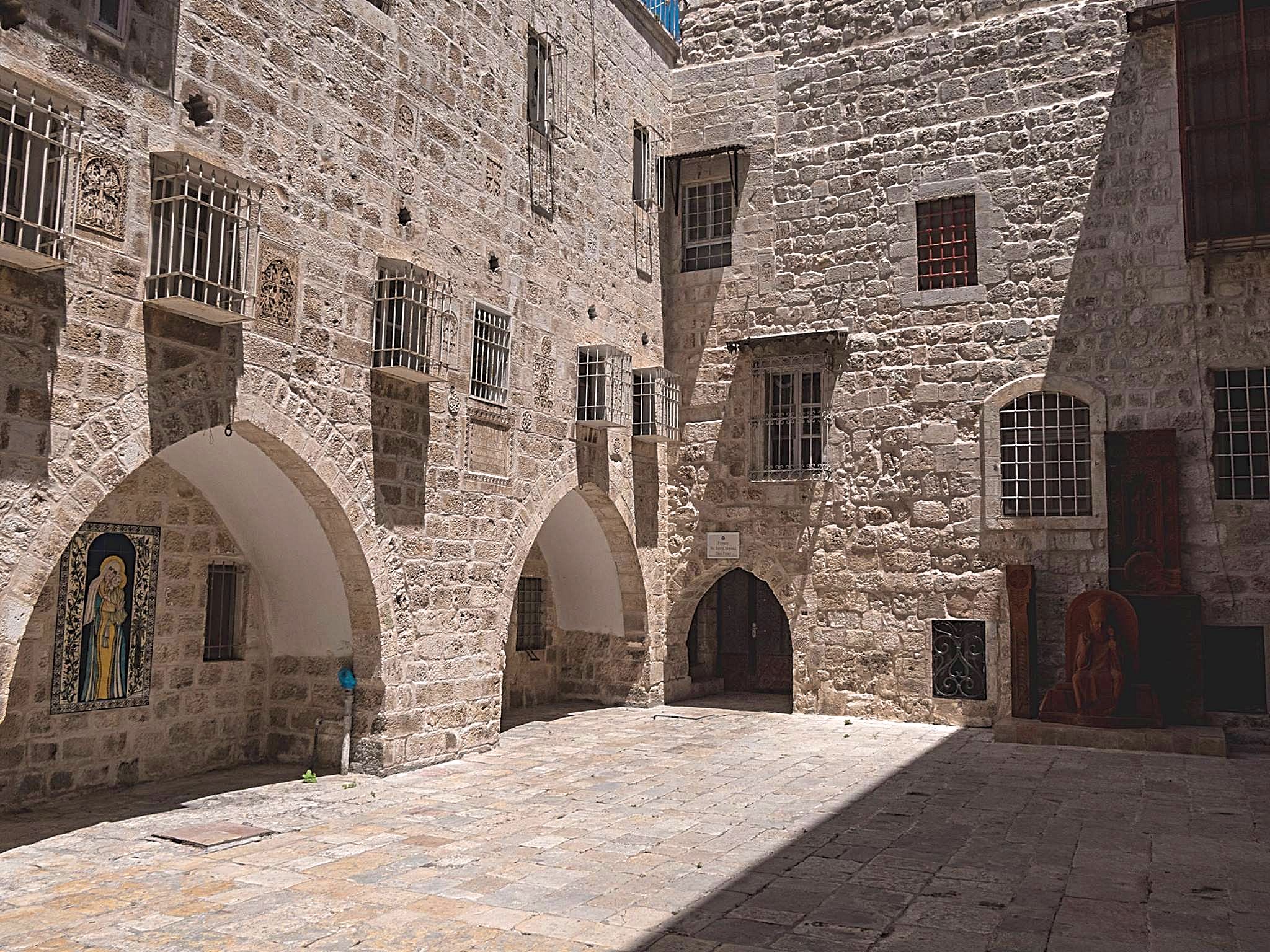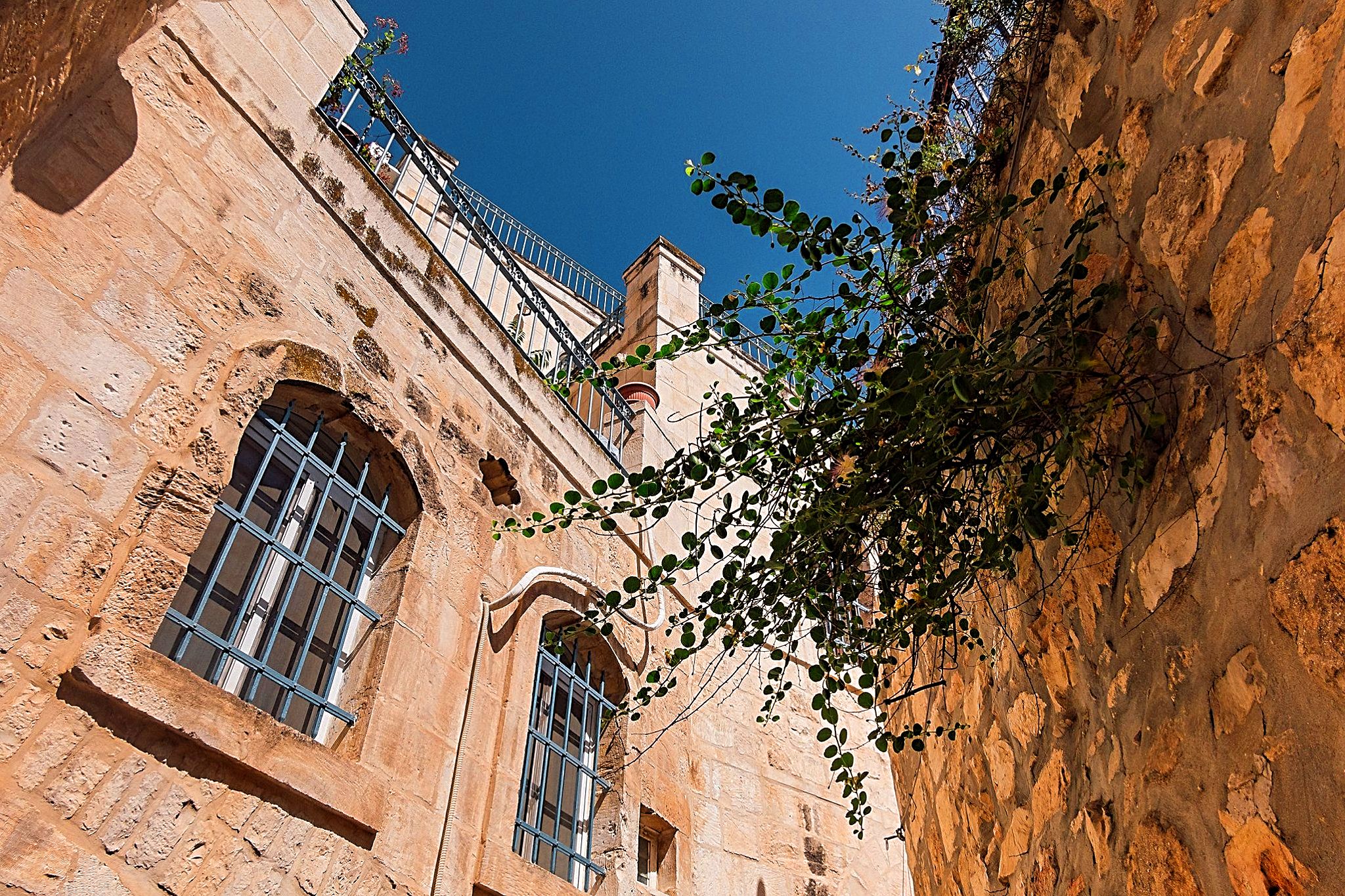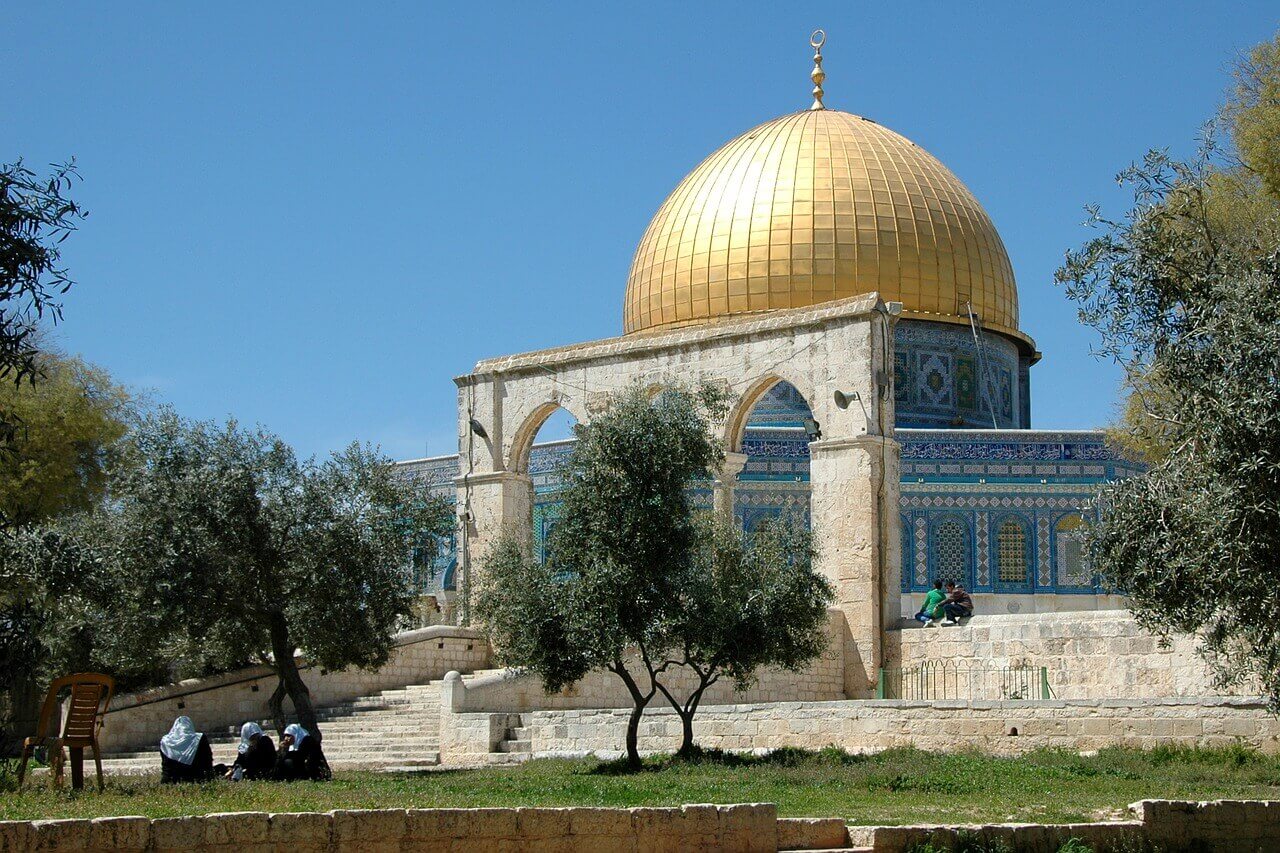Guide to the Jerusalem Old City
If you were to choose just one place to visit while in Israel it should be the Old City of Jerusalem. Packed within the 450 year old city walls is 1km² holding some of the country’s top attractions.The Old City is an exciting, exotic, spiritual and fascinating world of narrow cobbled alleys, mosques, churches, eateries, markets and more. The Old City remains as it was thousands of years ago and people still live and work here in the ancient buildings. Among the wonders of the Old City are the most important Jewish, Muslim and Christian religious sites in the country.
Brief History of Jerusalem
Jerusalem is one of the oldest cities in the world and getting an overall understanding of the history is extremely useful for anyone visiting the City of Gold. As you tour the various sites you’ll hear names of historic periods, leaders, and events so this brief history of Jerusalem will help you get some perspective.
It was here in Jerusalem that the ancient Jewish temples were built and where Jesus often visited and eventually was crucified. Golgotha, the site of Jesus's crucifixion is within the Old City marked by the Church of the Holy Sepulchre. King David conquered Jerusalem from the Jebusites in the 11th century BC and established his kingdom. Muslims took the city in 637AD and in 1099AD the first Christian Crusaders arrived.
The city changed hands several times and saw pilgrims arriving to various religious sites. The Old City walls we see today were built under Ottoman leader Suleiman the Magnificent in the 1500s. Up until 1860 all of Jerusalem was within the Old City walls, then the first neighborhood beyond the walls was established and the new city grew into the modern metropolis we see today.
But within the Old City walls, time seemed to stand still. From 1848 to 1867 the Old City was ruled by Jordan and no Jews were allowed to visit or live in the Old City until it was retaken by Israel in the Six-Day War. Jews returned to the city and it was repopulated with people in all four of the Old City’s quarters. The city has remained a tourist attraction and a pilgrimage site for Muslims visiting Temple Mount, Christians visiting the Church of the Holy Sepulchre, and Jews visiting the Western Wall.

Jerusalem. Photo credit: © Dmitry Mishin
The Timeline of Major Events in the History of Jerusalem
3500 BC – First signs of human settlers. c.1800 BC – Jerusalem mentioned in Egyptian texts.
1010-970 BC – Reign of King David, during this time he declares Jerusalem Capital of United Israel. 970-931 BC – Reign of King Solomon, during this time the First Temple was constructed in Jerusalem (957BC) on Temple Mount, and the county was divided into Israel and Judah.
837-800 BC – Reign of Hezekiah, King of Judah, during this time the underground waterways from Gihon Spring to the Pool of Siloam were dug to bring water to the city. 597 BC – Babylonians, led by Nebuchadnezzar II captured Jerusalem. 586 BC – Due to rebellion Nebuchadnezzar II destroyed the city, including the First Temple, and exiled many inhabitants including Jews who were sent to Babylon.
537 BC-332 BC – The Persian Period. Persians ruled under Cyrus who encouraged Jews to return to Israel and begin work on rebuilding the Temple. 521 BC-516 BC – The Second Temple was completed. 445 BC – City walls are rebuilt. 332 BC-167 BC – Hellenistic Period. Alexander the Great conquers Palestine, taking it from the Persians.
167 BC-63 BC – Hasmonean Period. With the Maccabean Revolt led by Mattathias, the Maccabean War is started and Jewish Priest Judah Maccabee takes over Jerusalem and restores the Temple which had been profaned under the earlier non-Jewish leaders. 63 BC -324 AD – Roman Period. Romans capture Jerusalem but the Hasmoneans continue to rule under Roman protection. 40 BC – Herod is appointed King of Judea and reigns as Herod the Great. Under Herod, they began rebuilding the Temple.

Sculpture of King David playing the harp, Jerusalem. Photo credit: © Shutterstock
324 AD-638 AD – Queen Helena, mother of Roman Emperor Constantine comes to Jerusalem and sets about identifying the locations of famous biblical events. She initiated the construction of several churches on holy sites including the Church of the Holy Sepulchre, constructed in 335 AD. The Jews are permitted to return to Jerusalem (438); the city is captured by the Persians and the Jews are expelled (614) and then the Byzantines recapture the capital (629).
638 AD-1099 AD – Muslim Period. During this time the Caliph Omar comes to the city and the Jews are allowed to return. The Dome of the Rock is completed (691) and the al-Aqsa Mosque is completed (701). Under Caliph al-Hakim many synagogues and churches were destroyed.
1099 AD-1244 AD – Crusader Period. Godfrey de Bouillon captures Jerusalem, and Baldwin I is declared King of Jerusalem. 1187AD – Saladin, a Kurdish General, takes Jerusalem from the Crusaders and allows Jews and Muslims to return to the city. 1192 AD – Richard the Lion Heart attempts to capture Jerusalem but having failed makes a treaty with Saladin allowing Christians to pray at the holy sites.

Dome of the Church of the Holy Sepulchre, Jerusalem. Photo credit: © Shutterstock
1219 AD – Sultan Malik-al-Muattam has the city walls destroyed. 1244 AD – The Turks capture Jerusalem from the Crusaders once and for all. 1260 AD-1517 AD – Mamluk Period. During this period the Mamluks capture Jerusalem; Nahmanides the great Jewish thinker arrives from Spain and established Jewish learning centers (1267AD); Marco Polo passes through and the Black Death plagues the city.
1517 AD-1917 AD – Ottoman Period. The Turkish Ottomans peacefully take over the city and Sultan Suleiman the Magnificent rebuilds the city walls which have not stood for over 300 years. The walls include the city gates and Tower of David which remains today.
1700 AD – Under Rabbi Yehuda HaHassid the Hurva Synagogue was built. 1860 AD – First Jewish settlements outside the city walls to escape overcrowding and disease. 1917-1948 British Mandate Period. The British led by General Allenby enter the city and lay their claim to the land. The construction of the Hebrew University on Mt. Scopus begins.
1947 –1949 – With the announcement of the UN resolution to partition Israel into an Arab State, Jewish State and Special International Regime for the City of Jerusalem civil war breaks out. This resulted at the end of the British Mandate and the Israeli War of Independence. Egypt, Syria, and Jordan fight against the Jewish State which is just coming into shape. The Israel-Transjordan Armistice Agreement (April 1949) gives Transjordan control of East Jerusalem. 1949 – Establishment of the State of Israel. 1967 – Six-Day War between Israel and Jordan, Israel captures the Old City which had been under Jordanian rule since 1949, and the Old City is united.

Old City market, Jerusalem. Photo credit: © Dmitry Mishin
Overview of the Old City
The Old City is surrounded by fortified walls and it is possible to walk along the ramparts. Visitors enter the Old City through the wall’s seven gates (there are actually eight gates but one is closed). The Old City is divided into four uneven quarters – the Muslim, Christian, Jewish and Armenian quarters. The division is not with walls but rather the quarters flow one onto the other.
In each quarter there is a distinct character; you’ll see people in traditional dress in each of the quarters – Hasidic Jews in their black coats and black hats in the Jewish Quarter, nuns, monks, and friars in their habits in the Armenian and Christian Quarters and in the Muslim Quarter the traditional keffiyeh headdress and long kaftan-type jellabiyah. In each of the quarters, you can buy souvenirs, taste ethnic food and see art and architecture unique to that quarter’s culture, religion, and history.
Christian Quarter
The Christian Quarter in the northwestern of the Old City has the New Gate, Jaffa Gate, Damascus Gate, and the junction of David Street and Souk Khan el-Zeit at its corners. This quarter is home to approximately 40 holy sites but the star of the quarter is without question the Church of the Holy Sepulchre. The church is a beautifully ornate and cavernous structure with many small chapels and intricate artwork.

Muristan fountain in the Christian Quarter; Old City of Jerusalem. Photo credit: © Shutterstock
The church dates back to at least the 4th century and houses the site where Jesus was crucified at Calvary, the tomb where he was buried and resurrected, and the last four Stations of the Cross. The church is shared by the Greek Orthodox, Roman Catholic, and Armenian Orthodox churches as well as the Syriacs, Ethiopians, and Egyptian Copts to a lesser extent.Jewish Quarter
Jews have inhabited the Jewish Quarter almost continuously since the 8th century BC. Parts of the Jewish Quarter have been excavated to reveal ancient Roman remains including the Cardo, which would have been the colonnaded main street during Jesus’ lifetime. The star of this quarter is the Western Wall; the last remaining part of the Second Temple which was destroyed in 70AD.
The Western Wall (Kotel) opens up to a large plaza and Jews come from across the globe to worship here. Local Jews worship at the Western Wall as they would at a synagogue. You can place a prayer note with your personal message to God between the large stones of the Western Wall.

Jewish Quarter, Jerusalem. Photo credit: Photo credit: © Shutterstock
Muslim Quarter
The largest quarter of the Old City is home to the Muslim population (and a few Jewish families). It has narrow cobbled lanes that are a bustle of activity. Within this quarter there is the Temple Mount, this is where the ancient 1st century Jewish Temple stood, and today it is the site of the beautiful Dome of the Rock which covers the Foundation Stone from where Muhammad is believed to have ascended to Heaven.
The Dome of the Rock has a distinctive golden dome which is a symbol of the city. Also on Temple Mount is the al-Aqsa Mosque, Muhammad’s destination in the Night Journey, and the Dome of the Chain a free-standing dome and the oldest structure on Temple Mount. The Western Wall Tunnels run beneath the Muslim Quarters and the Muslim Quarter has several Roman and Crusader remains. The Muslim Quarter has a lively market or “shuk” where you can find a huge range of goods. The Via Dolorosa runs through the Muslim Quarter and is home to the first seven Stations of the Cross.
Armenian Quarter
This is the smallest quarter of the Old City. It is home to Christian Armenians who arrived in Jerusalem in the 4th century AD when Armenia adopted Christianity and Armenian pilgrims came to visit the holy sites and settled here. The Armenian Quarter centers on St. James Monastery and the 4th-century Cathedral of St. James which houses the Jerusalem Patriarchate of the Armenian Apostolic Church.

Armenian Quarter, Jerusalem. Photo credit: © Dmitry Mishin
(Pop trivia: This is where Kanye West and Kim Kardashian held their daughter, North’s christening in 2015). The Armenians have their own distinct culture, religious traditions, and language. The Jerusalem Armenians are famed for their distinctive hand-painted tiles, tile murals, and handmade ceramics. You can buy ceramics in several stores in the Armenian Quarter and see street signs made from the brightly painted Armenian tiles.And Now for Something Special in the Old City….
- Dei res-Sultan Ethiopian Monastery accessed via the 9th Station of the Cross on the roof of a medieval annex in the Christian Quarter.
- Shopping in the Old City Market.
- Walking the Ramparts of the Old City walls.
- The Tower of David (Jerusalem Citadel) at Jaffa Gate, a museum, archaeological site, and sound and light show.
- Mamilla luxury shopping street – Northwest of Jaffa Gate.
- Follow the Via Dolorosa retracing Jesus’ route as he carried his cross towards Calvary.
Join today our wonderful Jerusalem Old City Tour

Сapers growing on the wall of a house in Jerusalem. Photo credit: © Dmitry Mishin
 Login / Register
Login / Register
 Contact Us
Contact Us

 Certificate of Excellence
Certificate of Excellence Guaranteed Departure
Guaranteed Departure Low Prices Guaranteed
Low Prices Guaranteed 24/7 Support
24/7 Support




